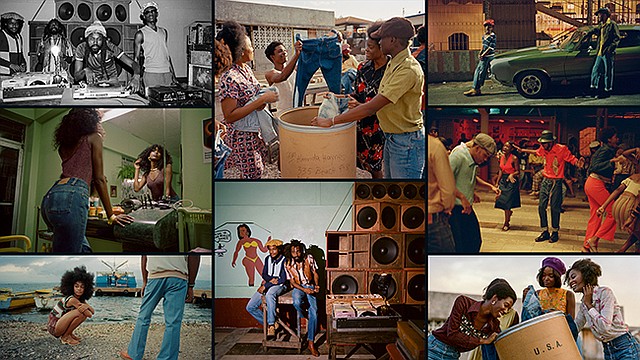The Iconic Levi’s 501 Jean Celebrates Its Sesquicentennial
501 turns 150
As of Sunday, May 7, 2023
James Dean wore them with a white T-shirt, rebelling without a cause; Marilyn Monroe wore them with the hems rolled up, proving that more than diamonds are a girl’s best friend. They are of course the blue jean, and this year the daddy of them all—make that the great-great-great granddaddy—the Levi’s 501, turns 150. That’s right, the 19th-century workwear pant turned 20th-century pop icon can now add the word “sesquicentennial” to its long résumé and singular position in the history of world fashion.
The California Apparel News caught up with Karyn Hillman, the San Francisco–based Levi Strauss & Co.’s chief product officer, to learn how the brand keeps the iconic garment fresh while staying true to its deep roots.
CAN: The 501 is truly “the real deal.” Do you think of it that way internally, that this is where jeans all began?
KH: We definitely think of it as the original, which has taken on a life of its own since 1873 as a beloved icon. And it’s still the blueprint of the modern blue jean 150 years later. In the history of clothing, we feel very privileged to have this in our archives to build upon again and again.
CAN: It really is singular in the world of fashion. Some items from Brooks Brothers come close, but this may be the oldest surviving garment still in production.
KH: It has to be one of them, and while it continues to evolve and adapt it’s still very true to its original roots. It’s that then-and-now that we continue to push, but we’re also really careful and respectful of its DNA, and that’s what’s kept its identity so strong.
CAN: Since respecting the 501’s timelessness while making it contemporary sounds mutually exclusive, can you give an example of how this approach plays out?
KH: We’re really just responding to people over the years. There were changes up to 1947, when it really became the standard five-pocket jean. Over the last ten years, as trends were shifting, stretch became really important and we’d never done that in the 501. But we ended up developing stretch into the shrink-to-fit fabric as an option. We’ve also added different fits, such as the ’93 version for men that’s done very well. Denim also changes from light to heavier, so things continue to tweak with the times. Sometimes it’s a blown-out knee, other times more subtle signs of wear that we reimagine. I think having a range is really important in denim today. We don’t rest on what the 501 was but don’t go too far forward to where it loses its tenets.
CAN: Over the past couple of decades there has been a huge explosion in premium denim and a ton of new brands. What is the female 501 customer like? Why does she choose the icon of Americana over something new and contemporary?
KH: I think that the 501 is such an authentic, humble, character-rich garment, versatile and democratic, and celebrating that versus going too contemporary really amplifies the authenticity of a jean. And aesthetically it’s very current with the button fly and shrink-to-fit fabric with the weave that collapses on itself and the anti-fit that’s not cut on the curve but rather the straight. So what’s coming across has a sensibility and aesthetic that is really current for today.
CAN: Why should someone who hasn’t worn 501s for a long time consider taking a fresh look at an old classic?
KH: In the past we had one jean available in any given year, but now we have a range in the 501 family. We’re still careful to curate, keeping it focused and edited, but we have expanded to where if you want a more relaxed feel we have the ’90s version and if you want the women’s original it’s a higher rise and closer fit. People say, “I didn’t think it would fit and didn’t know you had all these in your portfolio.”
CAN: How are the sesquicentennial celebrations going?
KH: Great, with a big media campaign that launched at the Grammys. We’ve also gone through our archives for real customer stories. One was out of Jamaica from the ’60s when some barrels had fallen off a cargo ship and washed up on the shore. The 501 wasn’t available there at the time, and when people opened the containers they were elated to find them filled with 501s!
